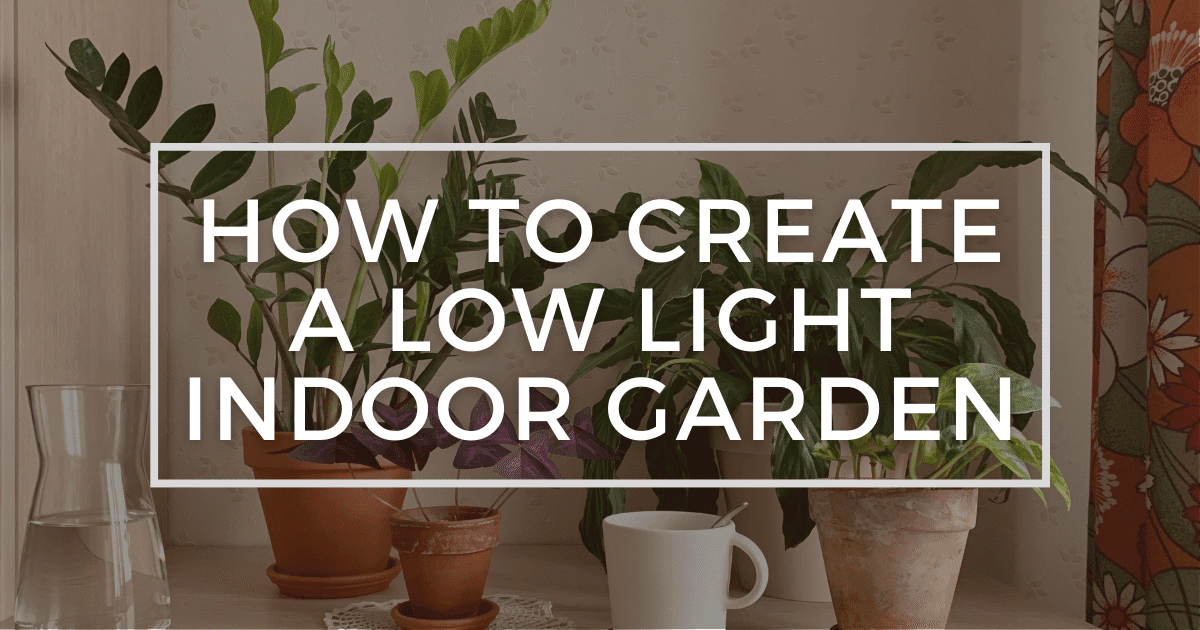Light is the very first requirement that is taught when it comes to plants. It is the most significant ingredient in their overall health. Hence, a sunlit window area would of course be the best location for your collection. But most are not blessed with an ideal spot to place the plants, especially for those living in an urban apartment. So what are some low light indoor plants to look for?
Firstly, what does low light mean?
Let’s first establish the conditions for adequate low light. Do take note that “low light” does not mean “no light”. It simply means that no direct sunlight will reach your plant, or be a few feet away from the source of sunlight. No matter how dappled it might be, plants need light to create energy and food.
How to provide light to plants in dark rooms?
In extreme cases where you have a space that has no window or is a far corner where natural light does not reach, you can supplement with grow lights. However, they can get a bit pricey if you aim to place them at every dark corner. So it’s better to start with low light indoor plants.
Will plants still grow in low light?
Plants can tolerate low light, survive, and grow albeit slowly. A plant in close proximity to the light source as opposed to one that is a few feet away will have a different growth rate. That’s one thing to consider but on the flip side, it can stay in place for a long period of time without needing to worry about where to transfer when it has outgrown its space.
Here are 10 low light indoor plants to start with:

1. Cast Iron Plan (Aspidistra elatior)
Probably the best plant for dimly lit rooms. Aptly named, it has a tough constitution and will live happily in poor light with occasional watering. In fact, direct sun can be more damaging, as it can bleach and burn its leaves. The only thing to remember is never to overwater and the soil should completely dry between watering. This plant is an extremely slow grower and often takes years to reach its full height. Grows upright and can reach up to 2-3 feet with its leaves reaching 2 feet long.
2. ZZ Plant (Zamioculcas Zamiifolia)
The Zamioculcas zamiifolia or ZZ Plant is quite resilient and very low maintenance. It would even benefit from a little neglect. You can depend on ZZ plant to tolerate any living conditions. It can live in a dark corner just as well as in an indirect sunlit space. It has grown in popularity not only because of this but due to its deep green waxy leaves that you’d mistake for an artificial plant. The best way to drive this plant to death’s door would be to overwater it. It grows from rhizomes that retain water which enables it to tolerate drought for a period of time.
3. Snake Plant (Dracaena trifasciata)
Dracaena trifasciata (formerly known as Sansevieria trifasciata) is a very forgiving plant. It can cope in very low light and it is easy to care for, perfect when you’re just starting out with your plant journey. The foliage is stiff typically flat, slightly concave, and can reach up to 4 feet tall. They are noted to have air-purifying qualities. However, keep it away from curious pets as this is toxic when ingested.
4. Pothos (Epipremnum aureum)
Also known as devil’s ivy, is named so because it is almost impossible to kill even if kept in dark places. It is an easy-growing, hassle-free, low-maintenance plant. This plant will show you if it needs watering as the leaves will start to droop and it will perk up after a drink. It’s a vining plant that can grow in either water or soil and trail up to 30 feet. If it gets leggy, prune it back and propagate the cuttings for new plants. For bigger foliage stake it up.
5. Heartleaf Philodendron (Philodendron hederaceum)
Often mistaken for Pothos, as they hold several similarities. They both grow fast, are low-maintenance, and can acclimate to different locations. The vining philodendron can be trained to climb on a trellis or in a hanging basket to allow the foliage to cascade down.
6. Chinese Evergreen (Aglaonema)
Choose from a variety of colors with its bright green, red, or even pink foliage, Aglaonemas can brighten up a gloomy room. The Chinese Evergreen is very durable, it can tolerate and adapt to dim rooms. However, the best option for low light areas are the ones with darker green foliage as it is known to grow in next to no light.
7. Dracaena
Dracaena Massangeana can be grown indoors in low light but other varieties such as marginatas will do better with bright indirect light. However, whichever variety it is it should never be under the direct sun as it can burn the foliage. Dracaena massangeana is a slow grower and can live in a space for a very long time without much care.
8. Peace Lily (Spathiphyllum)
Peace lilies are popular because they are low-maintenance and don’t require that much light to grow. It is a flowering plant that has large, glossy green leaves. The white flowers, called spathes, typically bloom in the spring, and can sometimes bloom twice a year. Although, it might be unlikely when placed in very poor lighting. But even without the flowers it’s a centrepiece on its own.
9. Peperomia
There are a number of different types of peperomia and most of them are capable of living in low light. The only exception is the variegated variety as most variegated plants they would require higher lighting conditions.
10. Spider Plant (Chlorophytum comosum)
Known for their air purifying qualities and low maintenance care. Spider plant can adapt to any living condition and are excellent for beginner plant owners. Just remember not to let the soil become too soggy as it can develop root rot. Your plant collection can multiply quite fast with the easy to propagate spiderettes (spider plant babies).
Care tips for your low light plants
- Don’t overwater. Plants that are away from brightly lit areas will have lower requirements. They could have a slower growth rate, and their soil might not dry as fast. Always check the soil if the top few inches are dry before watering.
- Rotate your plant. If your plants start to stretch on one side, it’s trying to reach for the light. To even this out turn your plants regularly to have all sides benefit from the available light.
- Limit fertilization. As the plant’s growth is slow it might not require as much fertilization. Only do so during the growing season.
- Clean the leaves. It would help your plants to wipe away any grime build-up on their foliage. Any clogs in its pores will interfere with photosynthesis and respiration. You can have a regular clean with a mix of gentle soap like castille soap and a little bit of alcohol diluted in water. Bonus, this will also wipe away any hidden pests.
Final Thoughts
Having a place that is in less favourable conditions and not checking the ideal requirements for house plants shouldn’t stop you from starting your indoor garden. You shouldn’t be deprived of experiencing those calming greenery. There’s always a way with the right knowledge. The key is finding the right low light indoor plants for; Choose a variety that has darker foliage, and you’ll have an easier time caring for the plants. With this list, you should be able to begin your journey with easy-going plants that can thrive in your low light indoor garden.
Happy planting!


